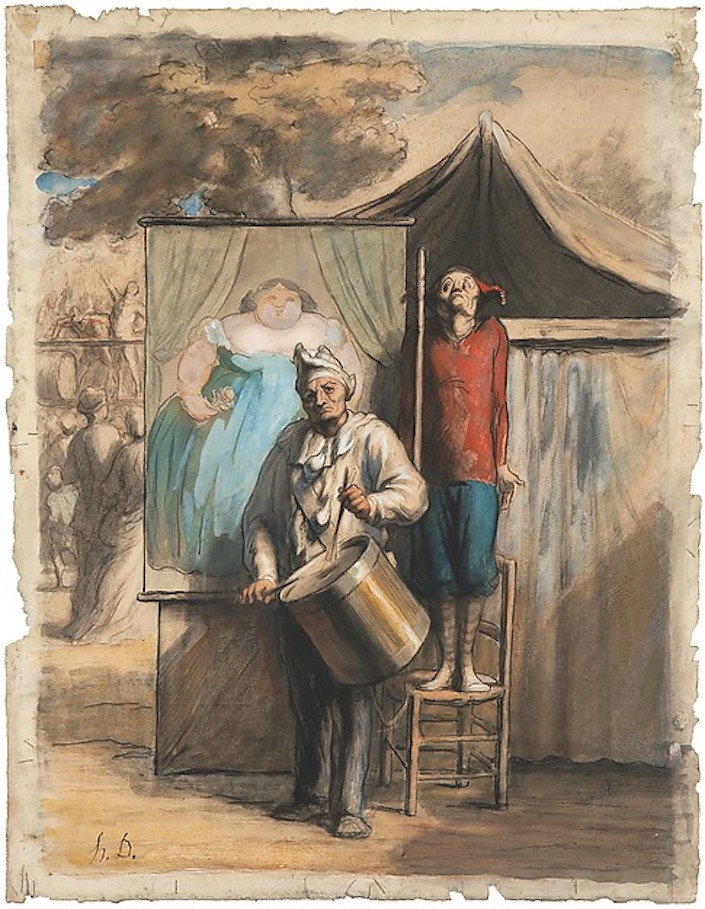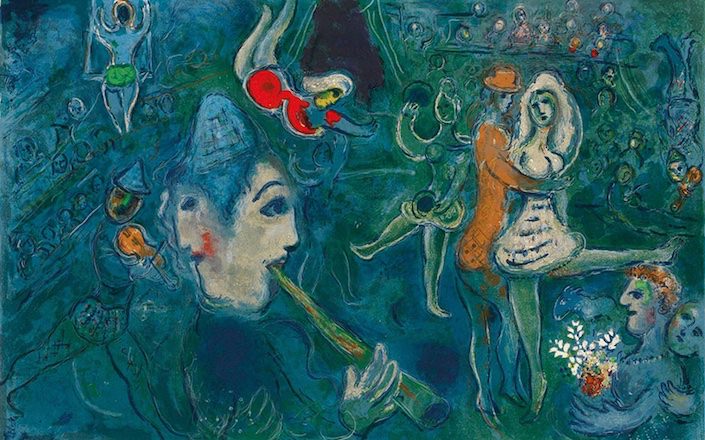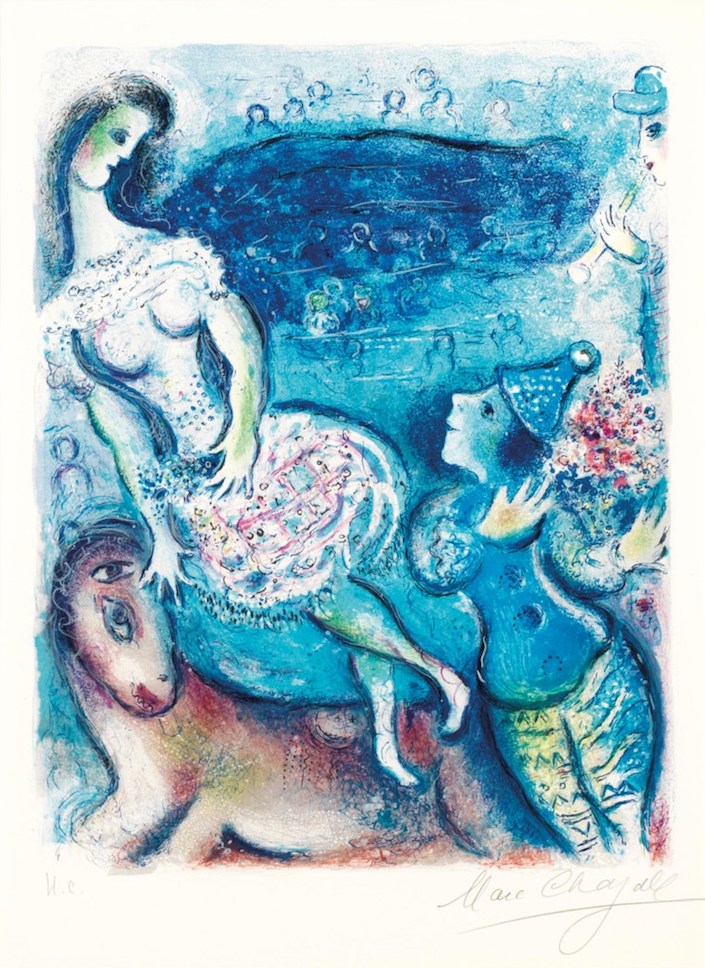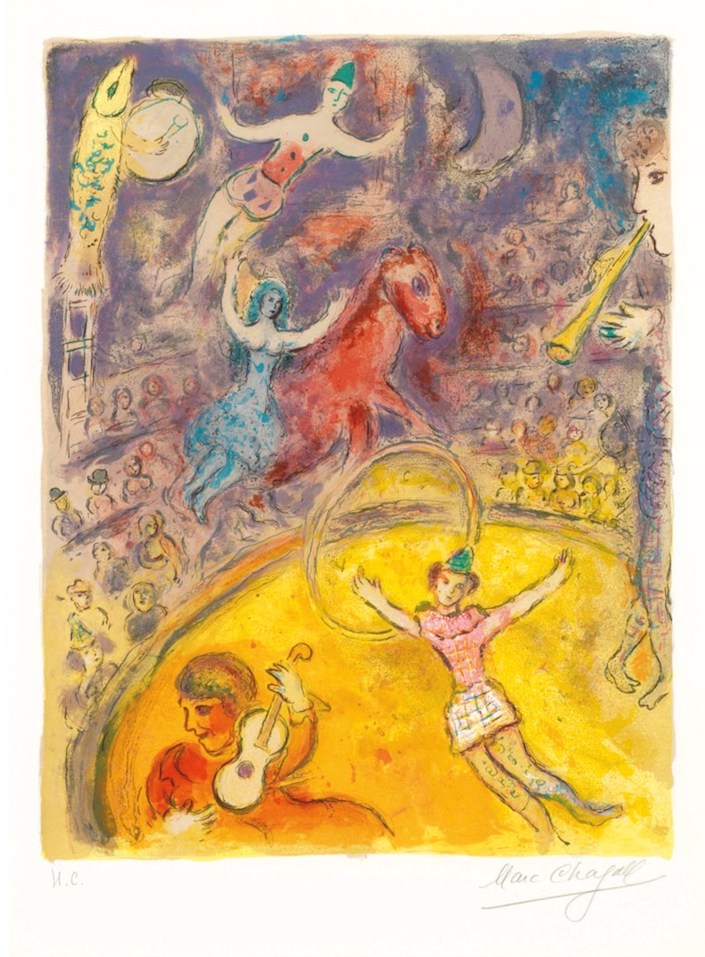In the days before film, television, technology and other modern day distractions, the circus was a popular and egalitarian form of entertainment, especially in Europe, where it had a centuries long history. Affordable and available to all, people looked forward to these traveling troupes that would perform seasonally. You may remember last year, the exhibit at the Metropolitan Museum,“Seurat’s Circus Sideshow, ” which focused on the artist’s famous “Circus Sideshow,” a jewel in the Met’s permanent collection.

In 19th century Paris, the mystique of the circus, with its vibrant visual appeal and ever changing scenes, inspired many artists, from Daumier (below) with his frequent caricatures, to Renoir, Degas, Lautrec and others.
 But Seurat’s Neo-Impressionist masterpiece, at top, presented the circus side show with a more modern and somber vision. Unlike the naturalistic immediacy of earlier Impressionism, Seurat believed in a careful almost scientific technique. Through his intense study of light and color and disciplined use of linear geometry, he imbues the night scene with a beautiful yet haunting mystery that translates to an underlying sense of fragility.
But Seurat’s Neo-Impressionist masterpiece, at top, presented the circus side show with a more modern and somber vision. Unlike the naturalistic immediacy of earlier Impressionism, Seurat believed in a careful almost scientific technique. Through his intense study of light and color and disciplined use of linear geometry, he imbues the night scene with a beautiful yet haunting mystery that translates to an underlying sense of fragility.

Picasso’s Family of Saltimbanques, above, from the artist’s Rose Period, 1905, famously depicts emotions of isolation and alienation. Artists could often relate to the transient lifestyle and hand to mouth existence of the circus performers, dependent on the caprices of their audience for their livelihood.
 Georges Rouault, in his Parade from 1907-10, above, also sought to express the disparity between the superficiality of the clown’s outward colorful appearance with a vulnerability and interior sadness. “I saw quite clearly that the ‘clown’ was me, was us, nearly all of us… We are all more or less clowns.”
Georges Rouault, in his Parade from 1907-10, above, also sought to express the disparity between the superficiality of the clown’s outward colorful appearance with a vulnerability and interior sadness. “I saw quite clearly that the ‘clown’ was me, was us, nearly all of us… We are all more or less clowns.”
 But the modern artist who produced the most prolific circus themed works may well be Marc Chagall. Fascinated by the circus since his childhood in Russia, Chagall was enthralled by the colorful and chaotic ambience and yet, like Picasso, was also sympathetic toward the uncertainty of the circus performer’s life.
But the modern artist who produced the most prolific circus themed works may well be Marc Chagall. Fascinated by the circus since his childhood in Russia, Chagall was enthralled by the colorful and chaotic ambience and yet, like Picasso, was also sympathetic toward the uncertainty of the circus performer’s life.
 After moving to Paris, Chagall’s dealer, Ambroise Vollard, in 1927 asked him to produce a suite of circus inspired gouaches. The project, known as Cirque Vollard, is a joyous homage to one of his favorite themes. Unlike many of the other artists who portrayed the circus in art, Chagall produced imagery with an uplifting and positive spirit.
After moving to Paris, Chagall’s dealer, Ambroise Vollard, in 1927 asked him to produce a suite of circus inspired gouaches. The project, known as Cirque Vollard, is a joyous homage to one of his favorite themes. Unlike many of the other artists who portrayed the circus in art, Chagall produced imagery with an uplifting and positive spirit.
 Decades later, using the gouaches as a model, Chagall engraved 23 color and 15 black and white lithographs, which were published in a deluxe edition of 24. And now, starting on February 19th through March 1, lithographs from the deluxe edition of Le Cirque are being offered in an online sale at Christie’s.
Decades later, using the gouaches as a model, Chagall engraved 23 color and 15 black and white lithographs, which were published in a deluxe edition of 24. And now, starting on February 19th through March 1, lithographs from the deluxe edition of Le Cirque are being offered in an online sale at Christie’s.
 all Chagall imagery courtesy of Christie’s
all Chagall imagery courtesy of Christie’s
For Chagall, the circus encapsulated many aspects of life, representing the perfect setting for his fantastical and personal storytelling. As he wrote, “For me, a circus is a magic show that appears and disappears like a world. These clowns, bareback riders and acrobats have made themselves at home in my visions.”


 all Chagall imagery courtesy of Christie’s
all Chagall imagery courtesy of Christie’s




I went to a large exhibition of Chagall some years ago and felt transported to another world. I felt as if I floated among the dreamy images as their subjects do.
All the works you selected here capture that dreamy quality. As my child grew up in France, the small, family circuses were a big attraction. I found them not dreamy at all but very sad, even desperate. The animals were the worst. But despite thin means, the performers managed to capture the imagination of the young crowd, who were mesmerized.
Wonderful. Mysterious. Evocative. Thank you, Stacey.
Very refreshing story, evoking memories from the childhood. Chagall’s impressions have a dose of feelings woven into characters. At first glance, these figures are “ease of existence” through their movement and games, still bear the weight of their living content.
Ahhh…the circus…we just toured “Ringling” in Sarasota…the art museums were outstanding. Wonder what he would have thought of Chagall…franki
How do designers incorporate their furry companions into their stylish homes, and what tips can they offer for creating a pet-friendly yet chic living space?
I have done two books on the subject. At Home with Digs and their Designers and At Home in the English Countryside: Designers and Their Dogs